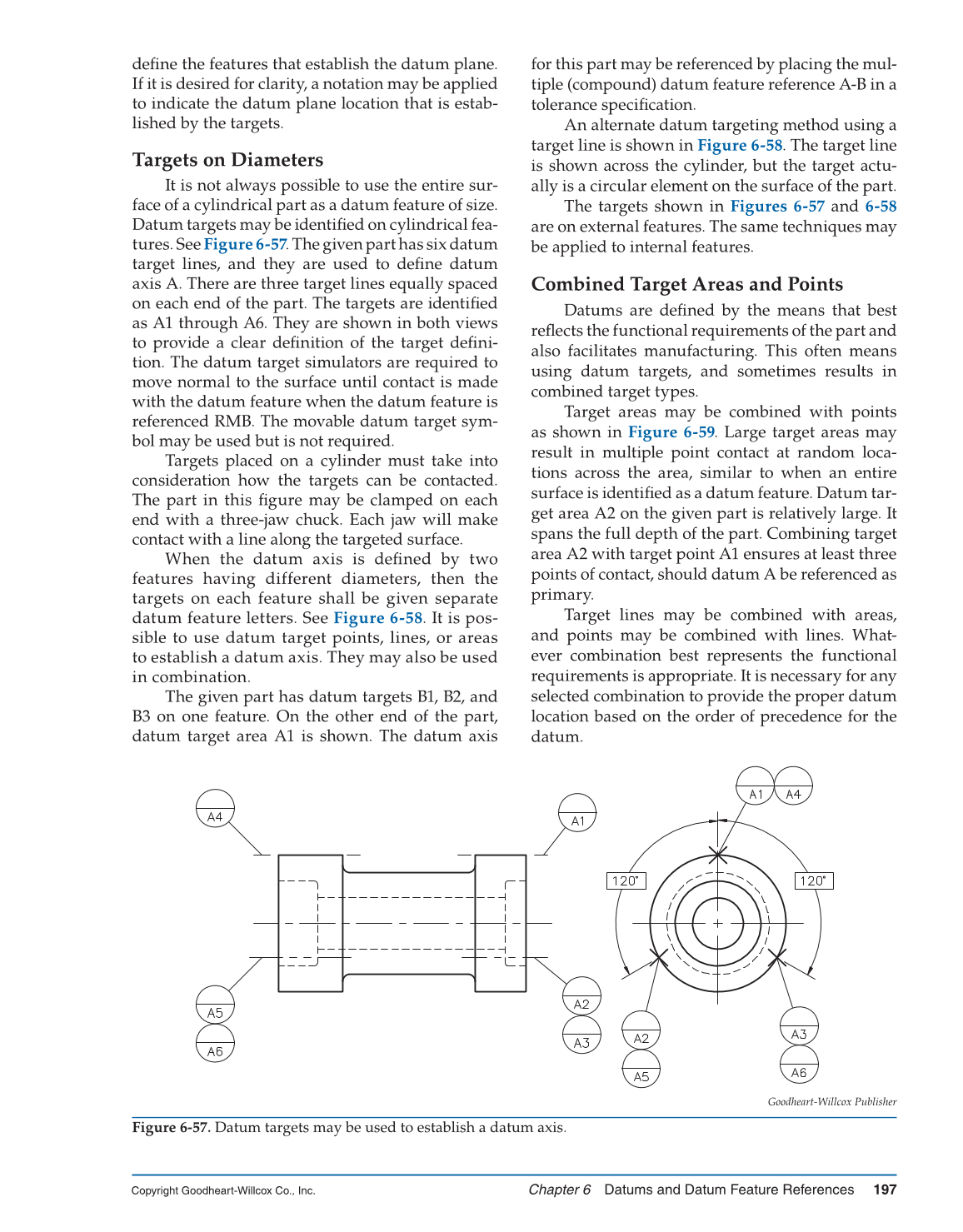Chapter 6 Datums and Datum Feature References 197
Copyright Goodheart-Willcox Co., Inc.
defi ne the features that establish the datum plane.
If it is desired for clarity, a notation may be applied
to indicate the datum plane location that is estab-
lished by the targets.
Targets on Diameters
It is not always possible to use the entire sur-
face of a cylindrical part as a datum feature of size.
Datum targets may be identifi ed on cylindrical fea-
tures. See Figure 6-57. The given part has six datum
target lines, and they are used to defi ne datum
axis A. There are three target lines equally spaced
on each end of the part. The targets are identifi ed
as A1 through A6. They are shown in both views
to provide a clear defi nition of the target defi ni-
tion. The datum target simulators are required to
move normal to the surface until contact is made
with the datum feature when the datum feature is
referenced RMB. The movable datum target sym-
bol may be used but is not required.
Targets placed on a cylinder must take into
consideration how the targets can be contacted.
The part in this fi gure may be clamped on each
end with a three-jaw chuck. Each jaw will make
contact with a line along the targeted surface.
When the datum axis is defi ned by two
features having different diameters, then the
targets on each feature shall be given separate
datum feature letters. See Figure 6-58. It is pos-
sible to use datum target points, lines, or areas
to establish a datum axis. They may also be used
in combination.
The given part has datum targets B1, B2, and
B3 on one feature. On the other end of the part,
datum target area A1 is shown. The datum axis
for this part may be referenced by placing the mul-
tiple (compound) datum feature reference A-B in a
tolerance specifi cation.
An alternate datum targeting method using a
target line is shown in Figure 6-58. The target line
is shown across the cylinder, but the target actu-
ally is a circular element on the surface of the part.
The targets shown in Figures 6-57 and 6-58
are on external features. The same techniques may
be applied to internal features.
Combined Target Areas and Points
Datums are defi ned by the means that best
refl ects the functional requirements of the part and
also facilitates manufacturing. This often means
using datum targets, and sometimes results in
combined target types.
Target areas may be combined with points
as shown in Figure 6-59. Large target areas may
result in multiple point contact at random loca-
tions across the area, similar to when an entire
surface is identifi ed as a datum feature. Datum tar-
get area A2 on the given part is relatively large. It
spans the full depth of the part. Combining target
area A2 with target point A1 ensures at least three
points of contact, should datum A be referenced as
primary.
Target lines may be combined with areas,
and points may be combined with lines. What-
ever combination best represents the functional
requirements is appropriate. It is necessary for any
selected combination to provide the proper datum
location based on the order of precedence for the
datum.
Goodheart-Willcox Publisher
Figure 6-57. Datum targets may be used to establish a datum axis.
